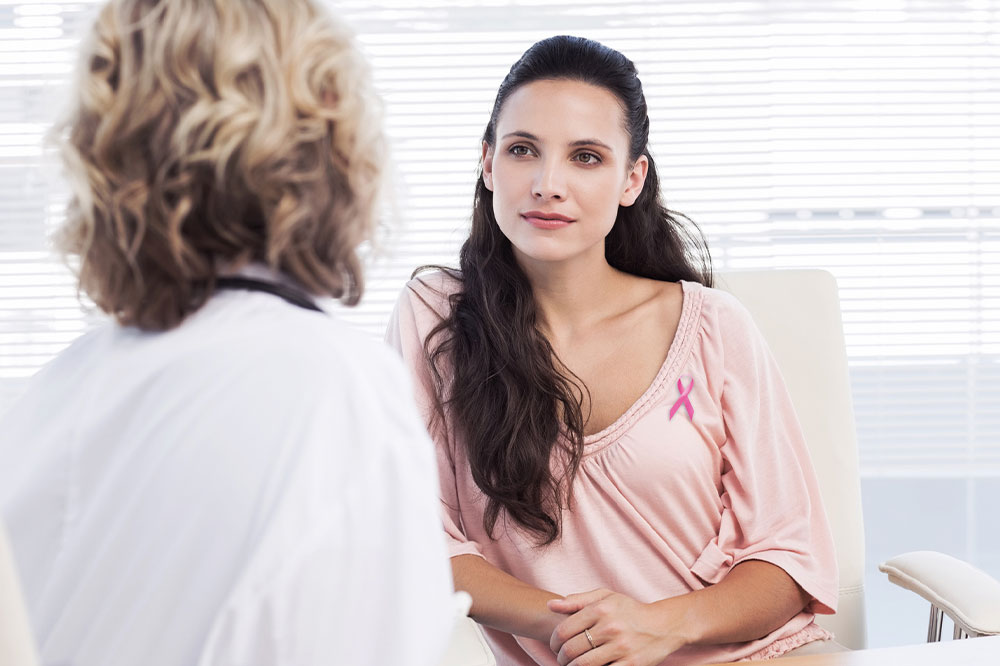Breast Cancer – Causes, Types, Preventive Measures, and More

Breast cancer is characterized by the rapid and aggressive formation of cells in the breast tissue of individuals. The cancerous collective of cells, known as tumors, can be benign (harmless) or malignant (potentially life-threatening). Approximately one in three cancer-affected females in the country have breast cancer. Although the condition can be found in men and women, it is most commonly diagnosed in the latter. Here is everything you need to know about breast cancer:
What causes breast cancer?
While the exact cause of breast cancer is unknown, researchers have identified specific hormonal, environmental, and lifestyle-related factors as its primary causes. There is no consistency in these factors as they differ from one affected individual to another. Breast cancer often begins with cells in the milk-producing ducts growing abnormally. This results in the forming of lumps or cellular masses in the breast/s. Arguably, like most cancer types, the most accurate answer is that breast cancer is caused due to a complex interaction between a person’s genetic design and immediate environment.
Five to ten percent of breast cancer cases also involve inheritance. So, if individuals from a given generation have breast cancer, there is a faint possibility that persons from the next generation may also develop it.
What are the types of breast cancer?
There are multiple types of breast cancer, including:
Ductal carcinoma in situ
This is normally referred to as stage zero cancer. In this type of breast cancer, the malignancy in the cells has not spread beyond the milk ducts. While this condition is certainly treatable, professionals recommend special care to prevent the cancerous cells from becoming overly aggressive and invasive.
Lobular carcinoma in situ
Similar to ductal carcinoma in situ, this condition is not classified as cancerous even though it involves abnormal growth of cells in the lobules of the breast. Due to its potential to turn from a “precancerous” condition to a cancerous one in the future, health professionals recommend special care, frequent breast exams, and mammograms for individuals with this condition.
Invasive ductal carcinoma
In this type, the rapid cell growth begins in the milk ducts of the breast before spreading through the duct wall and spreading to neighboring cells and tissues. This is the most common form of breast cancer, making up approximately 80% of all cases.
Triple-negative breast cancer
It is one of the most difficult types of cancer to diagnose as it does not have the three identifiable markers associated with other forms of breast cancer, making prognosis and early-stage treatment overly challenging. This type makes up approximately 15% of all breast cancer cases.
What are the symptoms of breast cancer?
Breast cancer can be identified through several symptoms such as:
- The emergence of dimples, flaky skin, redness, or irritation on the skin on and around your breasts
- The thickening or swelling up of a part or the whole of your breasts
- The emergence of single or multiple lumps in your breasts or underarms/armpits
- Persistent pain in or around your breasts
- Any change in shape or size of either or both breasts
- The discharge of blood or fluids other than milk from the nipples
If you show any of these symptoms or other issues in and around your breasts, contact your healthcare provider immediately.
What questions should you ask your healthcare provider after a diagnosis?
If you receive a positive breast cancer diagnosis from your healthcare provider, you may want to know everything about the condition. So, here are some queries you can ask to get immediate clarity about your diagnosis:
- Has the tumor begun spreading?
- Where exactly is the tumor located?
- What stage of breast cancer do you have?
- What are the treatment options available to you?
- Will breast cancer surgery be a viable option?
- What are the resources available for treatment or care?
- How long will the breast cancer treatment last?
- What do the readings and results from the estrogen receptor (ER), HER2, and progesterone receptor (PR) tests mean for you?
- Would you be able to carry on with your professional life during ongoing treatment?
What are the preventive measures for breast cancer?
Although there is no definitive detection factor of breast cancer, certain preventive measures can reduce the percentage of developing it. Some of these measures are:
- Undergoing regular clinical breast exams and mammograms to detect abnormal cell growth.
- Conducting self-exam of your breasts regularly. This involves touching your breasts and surrounding areas to detect any lumps, thickened skin, or other possible identifiers of breast cancer.
- Participating in physical exercise daily to keep your body active and prevent the possibility of increasing BMI.
- Eating healthy foods such as virgin olive oils, mixed nuts, fruits and vegetables, whole grains, legumes, and leafy items is a must. Foods containing healthy fats such as Omega-3 fatty acids and fish (instead of red meat) are advisable. Apart from lowering the chances of breast cancer, these foods are healthy in their own right and can provide plenty of nutrients and energy daily.
What are the treatment alternatives for breast cancer?
There are multiple kinds of treatment for breast cancer, including:
Surgery
This could include the surgical removal of the tumor and some surrounding tissue (lumpectomy), the removal of an entire breast/s (mastectomy), the removal of a few affected lymph nodes (sentinel node biopsy), the removal of the healthy breast to prevent the spread of cancer (contralateral prophylactic mastectomy), or the dissection or removal of lymph nodes (axillary lymph node dissection).
Chemotherapy
This treatment option involves the usage of certain chemicals and solutions to destroy cancerous cells.
Radiation therapy
In radiation therapy, high-powered radiation beams from an external machine are used to target and kill cancer cells.
Hormonal therapy
Hormone therapy involves the surgical blocking of the production of estrogen and progesterone, two hormones in a woman’s body that can stimulate breast cancer cell growth.






